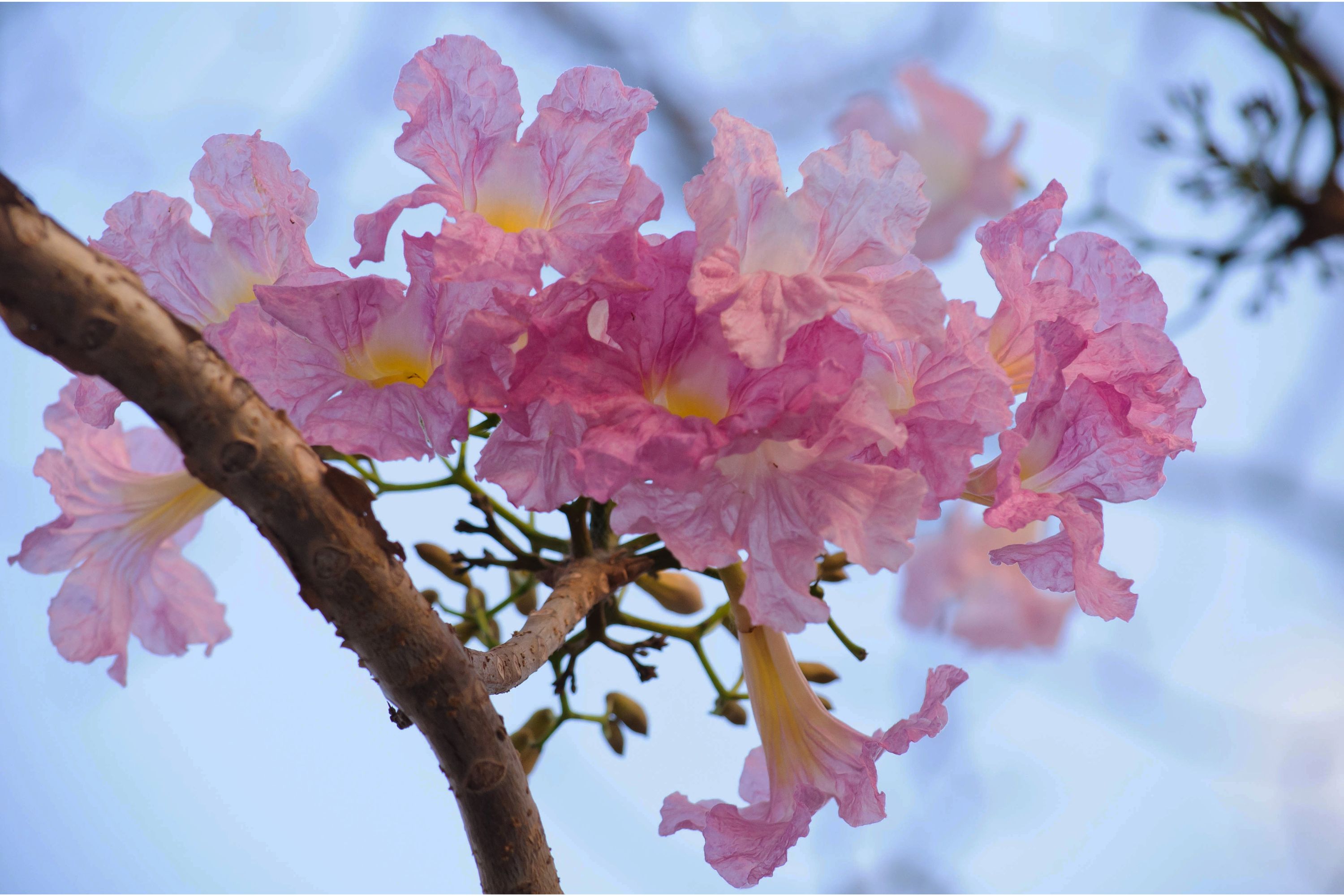White cedar
(Tabebuia heterophylla)

Description
Tabebuia heterophylla is a species of tree native to the Caribbean, and is also cultivated. It is also known as Roble blanco, pink manjack, pink trumpet tree, white cedar, and whitewood. Tabebuia heterophylla grows up to 20 to 30 feet tall. Leaves are opposite and palmately compound with five or fewer leaflets. T. heterophylla is considered brevi decidius. Flowers are Showy pink, tubular and five lobed (2 to 3 inches long). The flowering time is spring and Summer. Fruit is a seedpod, it splits along 2 lines to shed the numerous thin light brown seeds (1/2 to 1 inch long with 2 white wings). This tree is valuable for its timber production and grown for such purposes on plantations. It is commonly harvested from the wild for use locally and for export. Pink manjack is used as a street tree. Its height allows for it to provide lasting shade and as a result it can provide shade for a residential property near the patio or deck. Its floral display allow it to be valued and as a result, it is known as an ornamental tree. The flowers of Tabebuia heterophylla are in an inflorescence of the umbellate type. It is a perfect and complete flower with radial (actinomorphic) symmetry, and the whorls of the corrolla and the calyx are connately joined. The ovary is superior with an axile placentation, two locules and two carpels. Tabebuia is a genus of flowering plants in the family Bignoniaceae. The common name "roble" is sometimes found in English. Tabebuias have been called "trumpet trees", but this name is usually applied to other trees and has become a source of confusion and misidentification. Tabebuia consists almost entirely of trees, but a few are often large shrubs. A few species produce timber, but the genus is mostly known for those that are cultivated as flowering trees. Tabebuia is native to the American tropics and subtropics from Mexico and the Caribbean to Argentina. Most of the species are from Cuba and Hispaniola. It is commonly cultivated and often naturalized or adventive beyond its natural range. It easily escapes cultivation because of its numerous, air-borne seeds. In 1992, a revision of Tabebuia described 99 species and one hybrid.
Taxonomic tree:







